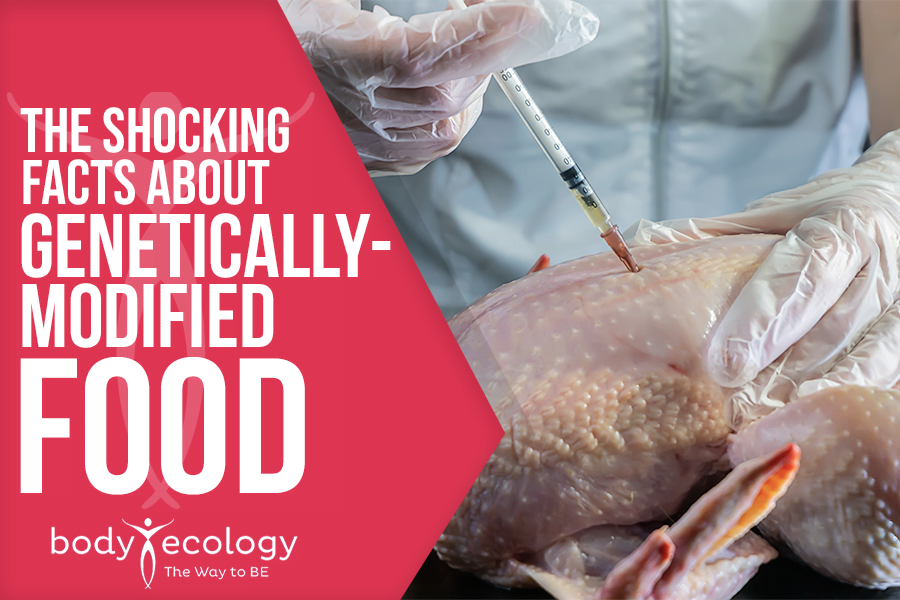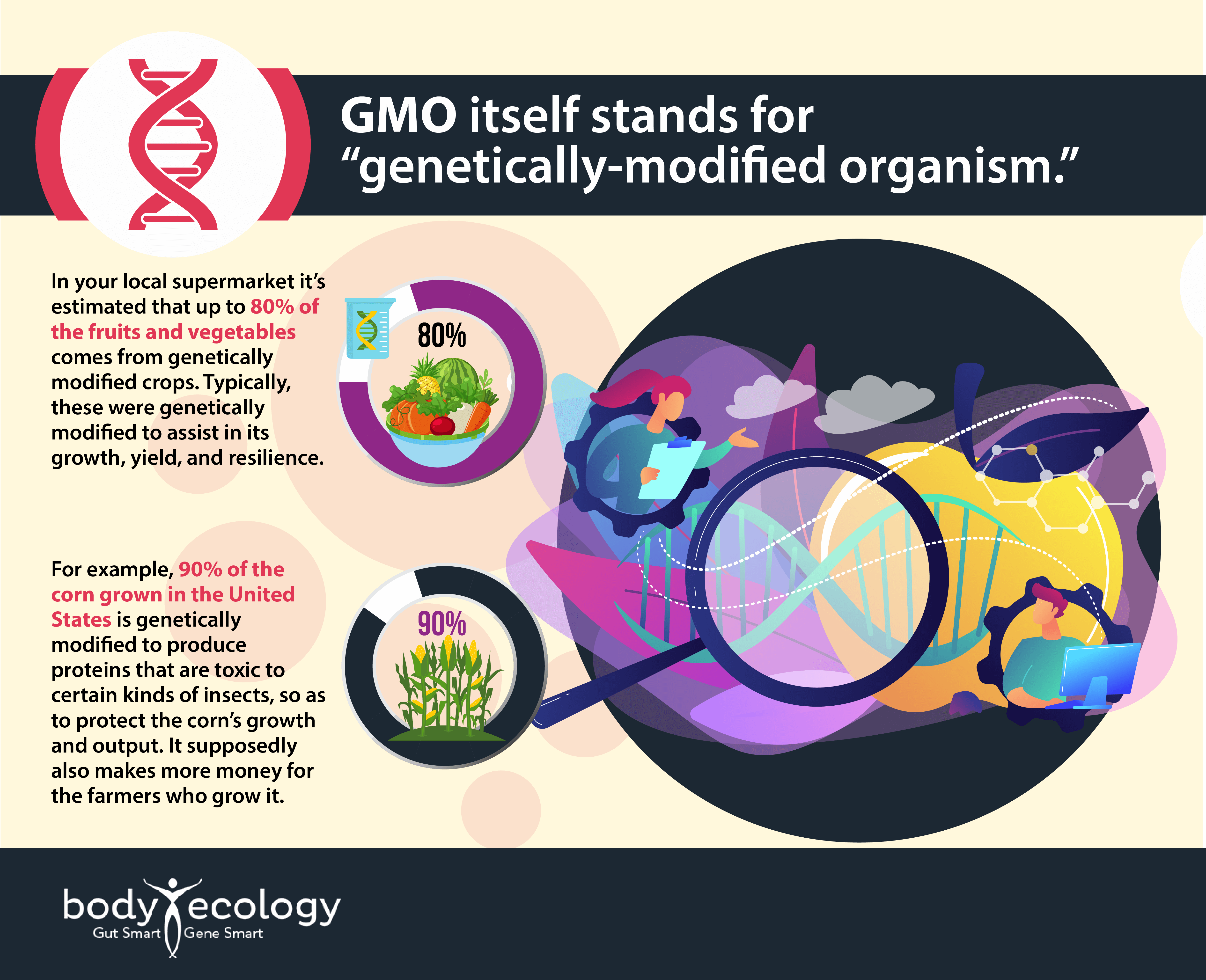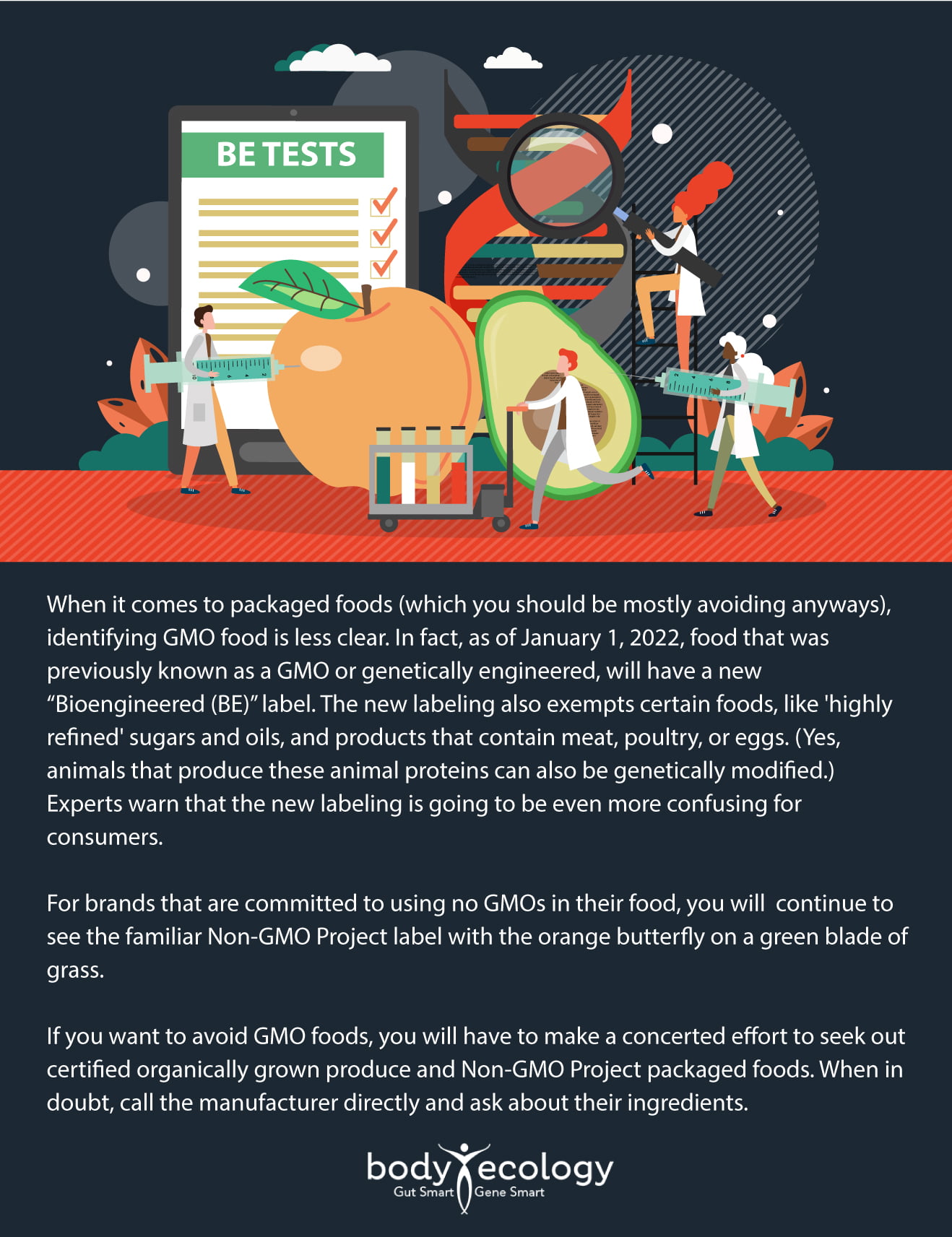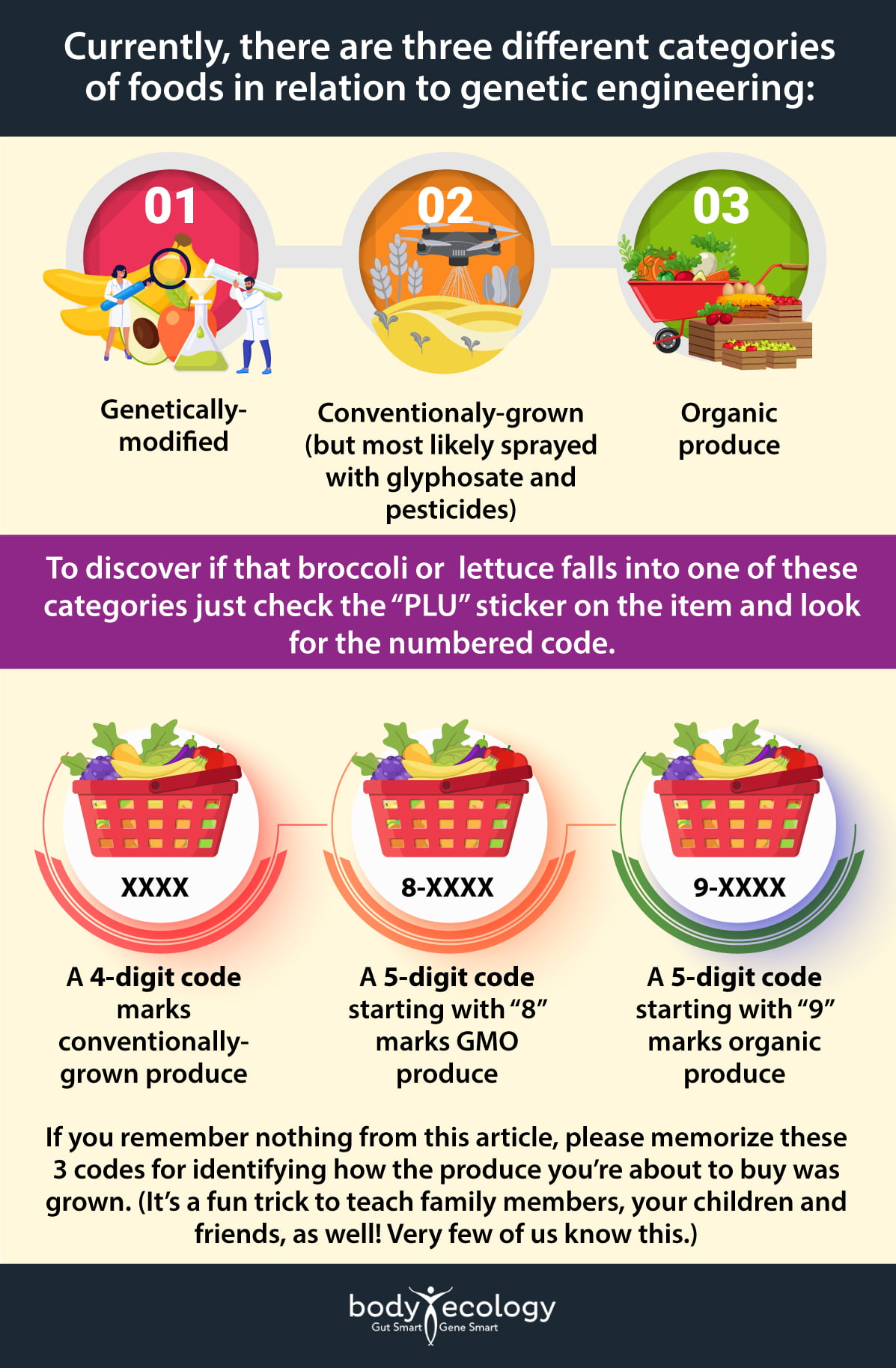The Shocking Facts about Genetically-Modified Food!

According to the World Health Organization,
“Genetically modified (GM) foods are foods derived from organisms whose genetic material (DNA) has been modified in a way that does not occur naturally, e.g. through the introduction of a gene from a different organism.”
Sound scary? Let’s take a closer look at GMOs—the Pros and Cons—then you decide whether to embrace them or avoid them.

GMO itself stands for “genetically-modified organism.” In your local supermarket it’s estimated that up to 80% of the fruits and vegetables comes from genetically modified crops. Typically, these were genetically modified to assist in its growth, yield, and resilience. For example, 90% of the corn grown in the United States is genetically modified to produce proteins that are toxic to certain kinds of insects, so as to protect the corn’s growth and output. It supposedly also makes more money for the farmers who grow it.
So Are GMOs Really All That Bad?

The debate around GMOs—about whether they are safe for humans and livestock—is decades long. Proponents argue that GM foods are a solution to the food shortage we face as we try to feed the enormous population around the world. They state that GMO foods are a solution for the scarcity of environmental resources and infestation from weeds and pests.
However, other groups of scientists, environmentalists, farmers and consumers warn that GMO foods are a risk to food security as well as to the environment. For example, the seeds to grow GMO corn have been modified to produce the Bt toxin so that there is less need for pesticides. Bt stands for a soil bacteria called, Bacillus thuringienis. Genes from this bacteria are inserted into the corn seed so that it can produce a toxic protein to make it more resistant to certain pests. Another variety of GMO corn absorbs the dangerous pesticide, Roundup (aka glyphosate), more efficiently.
Knowing who to trust on this controversial topic is difficult for the general population since the American Medical Association and World Health Organization have concluded from the research of independent groups worldwide that genetically modified foods are safe for consumers. But can we trust them?
The world’s foremost expert on GMOs, Jeffrey Smith says emphatically, “NO!”
He founded the Institute for Responsible Technology. Much research over the years shows that depending on how the plant was modified it could be harming your liver, kidneys heart, spleen, adrenals and blood cells.
Listen to the expert interview below with Donna Gates and Jeffrey Smith on the effect GMOs have on the microbiome. This informative talk breaks down the complex, but vital information that you need to know to avoid the damage that GMO foods wreak on our bodies.
<<<You can get access to more than 30 other talks like this when you purchase Body Ecology’s Healthy Gut Summit for $47 for a limited time (normally $97). >>>
Our top experts provide cutting-edge information and simple science you can use right away:
– Learn how diet and lifestyle affect the gut microbiome.
– Understand chronic disease and the symptoms that signal its presence.
– Learn about the gut-brain connection to mood and behavior.
– Practical advice about dealing with diet, stress, toxins and parasites.
The Upside Of GMOs
However, If you ask farmers in Hawaii if GMOs are bad, you will hear a resounding “no.” There, GMOs have been instrumental in protecting papaya crops.
In the 1990’s, Hawaiian papaya farms were hit with a devastating outbreak of a virus called papaya ringspot virus. Naturally, this put many farms and families alike at risk for reduced income, and even the potential to lose their farms and homes.
Scientists quickly rushed to find a solution, and what they discovered changed the course of agricultural history: much like how vaccines can make humans more resistant to certain infections, the scientists created a “vaccine” by extracting a genetic sequence from the virus and placing it within the papaya genome.
This created 100% virus-resistant plants, all while maintaining the integrity of the plant’s taste, appearance, and nutrition. And also saving the farmer’s from financial ruin.
How Can You Identify a Genetically-Modified Fruit or Vegetable?
Whether you want to avoid GMO produce, or you’re just curious about whether the fruits and vegetables you’re eating (and giving your kids) has been genetically altered, there is a simple solution to identify it: just check the sticker!
Currently, there are three different categories of foods in relation to genetic engineering:
1) genetically-modified
2) conventionally-grown (but most likely sprayed with glyphosate and pesticides)
3) organic produce
To discover if that broccoli or lettuce falls into one of these categories just check the “PLU” sticker on the item and look for the numbered code.
- A 4-digit code marks conventionally-grown produce
- A 5-digit code starting with “8” marks GMO produce
- A 5-digit code starting with “9” marks organic produce

When it comes to packaged foods (which you should be mostly avoiding anyways), identifying GMO food is less clear. In fact, as of January 1, 2022, food that was previously known as a GMO or genetically engineered, will have a new “Bioengineered (BE)” label. The new labeling also exempts certain foods, like ‘highly refined’ sugars and oils, and products that contain meat, poultry, or eggs. (Yes, animals that produce these animal proteins can also be genetically modified.) Experts warn that the new labeling is going to be even more confusing for consumers.
For brands that are committed to using no GMOs in their food, you will continue to see the familiar Non-GMO Project label with the orange butterfly on a green blade of grass.
If you want to avoid GMO foods, you will have to make a concerted effort to seek out certified organically grown produce and Non-GMO Project packaged foods. When in doubt, call the manufacturer directly and ask about their ingredients.
What To Take Away From This Article
While the argument supporting genetically modified certain foods seems positive and major health groups claim they are safe to eat, the reality is that GMO foods are still a relatively new invention. Not much is known about their long-term effects on human health. This leads many people to err on the side of caution and wisely avoid GMO foods.
Whether you choose a GMO-inclusive or GMO-free diet, I encourage you to continue asking questions about the food you’re eating. Dig deeper, find the answers, and ensure that you’re safely giving your body the nutrition it needs.









